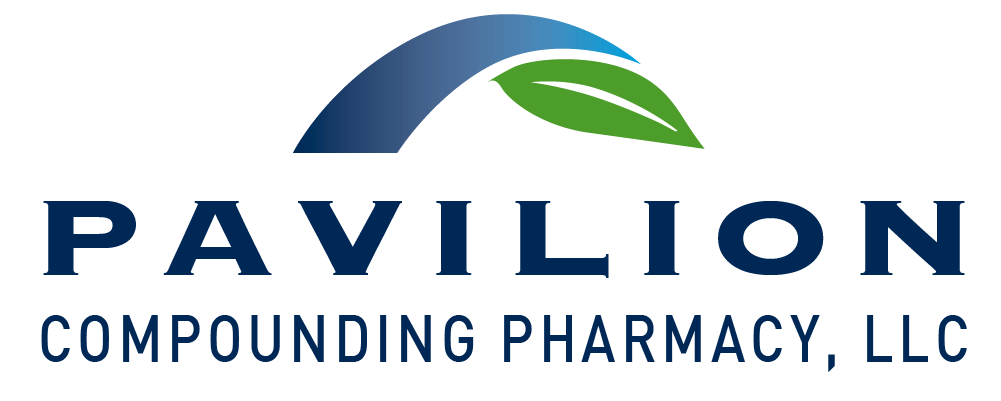Originally designed to treat cardiovascular diseases, phosphodiesterase-5 (PDE5) inhibitors made a major splash on the pharmaceutical market in 1998 with the approval of Viagra®. By far, it was the blockbuster drug of the decade. Other PDE5 inhibitors were soon to follow, and patent-expiration dates have been an interesting phenomenon to watch, with multiple extensions involved. The good news is that tadalafil is now free of patents, and Pavilion Compounding Pharmacy has a plethora of opportunities to use this drug in various customized compounds.
TADALAFIL USES & FURTHER RESEARCH
Tadalafil has labeled uses for benign prostatic hyperplasia, erectile dysfunction (ED) (including patients with diabetes mellitus or following radical prostatectomy), and improvement in exercise ability for patients with World Health Organization Group I pulmonary hypertension. There is a sub-group combination for benign prostatic hyperplasia and ED as well. Off-label uses include altitude-sickness prophylaxis (specifically prevention of highaltitude pulmonary edema), and treatment of sexual dysfunction in males receiving antidepressant therapy.1
Researchers have looked at or are currently looking at tadalafil in many other areas of interest as well. These include treatment for fetal growth restriction, Duchenne and Becker muscular dystrophies, male reproduction (increase in semen quality), improved endothelial function, passage of distal ureteral stones, treatment of myocardial ischemia/reperfusion injury and heart failure along with bladder ischemia, and aging bladder dysfunction.2,3,4,5
It is rare and also very exciting when we as compounders get such a new, widely researched and proven option for our tool boxes. With the current indications and potential uses, Pavilion Compounding Pharmacy will be able to repurpose this ingredient in many ways with a variety of dosage forms to meet patient needs.
POTENTIAL COMPOUNDING OPTIONS WITH TADALAFIL
The obvious compounding use for this ingredient is in various dosage forms for ED in men. For patients whose needs are not met with commercial products, we have created a variety of formulas (oral, sublingual/buccal, rapid dissolve, and nasal) of different strengths, with dosages compliant in the potency variations from manufactured products. Additional options include interesting combinations of ingredients. For example, activated vitamin B6 (pyridoxal 5 phosphate) can help decrease pituitary secretions, including prolactin, and excess prolactin is associated with decreased arousal in both men and women. Apomorphine has shown to be effective and well tolerated in the treatment of ED.6 There is an interesting link with vitamin B6 deficiency and increased risk of cardiovascular disease as well as high homocysteine levels linked to ED, suggesting that folate and vitamin B12 could also be beneficial.7,8
It is important to understand that many of these formulas can be used for multiple reasons. Also, please note that this drug is not without adverse events, contraindications/precautions and drug-drug interactions, etc., when given percutaneously (transdermal or vaginal), because if it is absorbed, it can have effect and must be eliminated.
Apart from sexual aversion, vaginal pain and vaginal atrophy, there are four main problematic aspects to female sexual dysfunction caused by multiple factors: desire, arousal, orgasm and sexual satisfaction. Tadalafil orally may be effective for sexual desire, sexual arousal, sexual orgasm and sexual satisfaction. Not only does it increase nitric oxide in the corpus cavernosum of men, but in women, it also results in the relaxation of clitoral and vaginal smooth muscle and increased blood flow in these sites, a normal step in arousal and necessary to achieve orgasm.9 This mechanism makes it likely to improve the arousal aspect, possibly leading to improved orgasmic outcome. There are also case studies showing improved libido and anorgasmia from oral use in patients on serotonin reuptake inhibitors.10
Wound care is another logical use for tadalafil. With the exception of exudative types (e.g., venous stasis), wounds benefit from increased nitric oxide availability to help improve blood flow.11 Tadalafil 1 mg/Gm Topical Gel is a potential option for patients with wounds, but may also be considered for those with female sexual dysfunction and applied externally or vaginally.
Please contact our clinical compounding pharmacists today for questions relating to your specific needs. We are here to help the providers and patients in our community achieve optimal wellness! You can also check out our other blog post for other treatment options related to erectile dysfunction.
References
1. Tadalafil – Drug Summary. (n.d.). In Prescribers’ Digital Reference. Retrieved from https://www.pdr.net/ drug-summary/Adcirca-tadalafil-2115
2. Umekawa, T., Maki, S., Kubo, M., Tanaka, H., Nii, M., Tanaka, K., . . . Ikeda, T. (2018). TADAFER II: Tadalafil treatment for fetal growth restriction – A study protocol for a multicenter randomised controlled phase II trial. BMJ Open, 8(10). http://dx.doi.org/10.1136/bmjopen-2017-020948
3. Amano, T., Earle, C., Imao, T., Matsumoto, Y., & Kishikage, T. (2018). Administration of daily 5mg tadalafil improves endothelial function in patients with benign prostatic hyperplasia. Aging Male, 21(1), 77-82. https://doi.org/10.1080/13685538.2017.1367922
4. Bai, Y., Yang, Y., Wang, X., Tang, Y., Han, P., & Wang, J. (2017). Tadalafil facilitates the distal ureteral stone expulsion: A meta-analysis. Journal of Endourology, 31(6), 557–563. https://doi.org/10.1089/ end.2016.0837
5. Andersson, K.-E., Boedtkjer, D. B., & Forman, A. (2017). The link between vascular dysfunction, bladder ischemia, and aging bladder dysfunction. Therapeutic Advances in Urology, 9(1), 11–27. https://dx.doi. org/10.1177%2F1756287216675778
6. Mullhall, J. P., Bukofzer, S., Edmonds, A. L., & George, M. (2001). An open-label, uncontrolled doseoptimization study of sublingual apomorphine in erectile dysfunction. Clinical Therapeutics, 23(8), 1260–1271.
7. Baghdadi, H. H., Allam, A., & Sheweita, S. A. (2013). Erectile dysfunction medication induced-changes in plasma levels of homocysteine and antioxidant enzyme activities as risk factors for cardiovascular disease. Journal of Taibah University Medical Sciences, 8(3), 151–156. https://doi.org/10.1016/j. jtumed.2013.04.003
8. Friso, S., Lotto, V., Corrocher, R., & Choi, S. W. (2012). Vitamin B6 and cardiovascular disease. In J. R. Harris (Ed.), Subcellular Biochemistry (Vol. 56, pp. 265–290). https://doi.org/10.1007/978-94-007-2199-9_14
9. Borghi, C., & Dell’Atti, L. (2017). Tadalafil once daily: Narrative review of a treatment option for female sexual dysfunctions (FSD) in midlife and older women. Archivio Italiano di Urologia e Andrologia, 89(1), 7–11. https://doi.org/10.4081/aiua.2017.1.7
10. Ashton, A. K., & Weinstein, W. (2006). Tadalafil reversal of sexual dysfunction caused by serotonin enhancing medications in women. Journal of Sex Marital Therapy, 32(1), 1–3. https://doi. org/10.1080/00926230500229079
11. Davenport, C., & Dubin, A. (2015). Tadalafil therapy and severe chronic foot wound resolution. International Wound Journal, 12(6), 733–736. https://doi.org/10.1111/iwj.12378
12. Han, G., Tar, M., Kuppam, D. S., Friedman, A., Melman, A., Friedman, J., & Davies, K. P. (2010). Nanoparticles as a novel delivery vehicle for therapeutics targeting erectile dysfunction. The Journal of Sexual Medicine, 7(1), 224–233. https://doi.org/10.1111/j.1743-6109.2009.01507.x
13. Patel, R. M., & Nagle, D. J. (2012). Nonoperative management of scleroderma of the hand with tadalafil and subatmospheric pressure wound therapy: Case report. The Journal of Hand Surgery, 37(4), 803–806. https://doi.org/10.1016/j.jhsa.2011.12.030
14. Nat Jones PCCA Consultant. Winter 2019 Apothagram.



